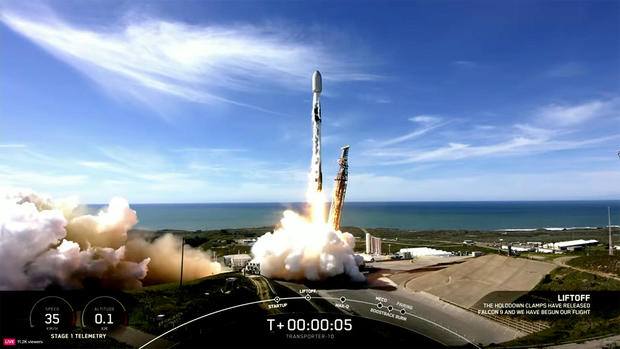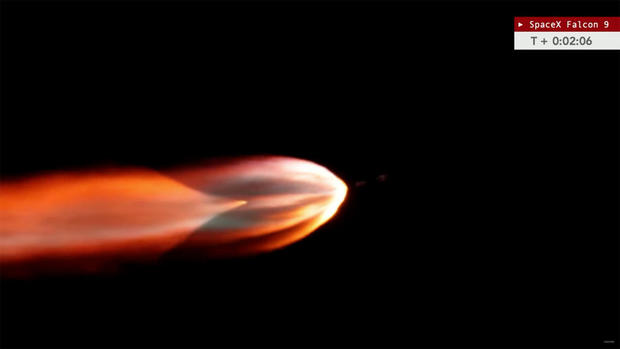On Monday, SpaceX launched 53 commercial satellites from California, less than a day after deploying a crew of four to the International Space Station. One of the innovative methane emissions monitors created by a charity was among them. Additionally, SpaceX launched 23 additional Starlink satellites from Florida shortly after.
The Crew Dragon spacecraft, carried by a SpaceX Falcon 9 rocket, departed from the Kennedy Space Center on Sunday night, initiating a 28-hour journey to transport three NASA astronauts and a Russian cosmonaut to the space station.
As the Crew Dragon headed for a scheduled docking at 3 a.m. EST Tuesday, another Falcon 9 took off from California’s Vandenberg Space Force Base at 5:05 p.m. EST Monday. This rocket carried 53 small satellites, part of SpaceX’s 10th “rideshare” mission, designed to offer affordable launches for smaller payloads.

Among the satellites was MethaneSAT, a project by a subsidiary of the Environmental Defense Fund aimed at monitoring methane emissions globally. Despite initial skepticism, the project secured funding from various sources, including the Bezos Earth Fund, to construct the satellite.
The satellites were successfully deployed from the Falcon 9’s second stage as planned, with MethaneSAT being the final one to be released.
Before completing the Transporter 10 mission, SpaceX launched another Falcon 9 from Cape Canaveral Space Force Station, sending 23 more Starlink satellites into orbit.
The first stage of the rideshare mission, on its fifth flight, safely returned to Vandenberg while the Starlink booster landed on a droneship at sea. This marked SpaceX’s 281st successful first-stage recovery, with 207 consecutive successful landings.
With this Starlink launch, SpaceX achieved a new record by launching three Falcon 9 rockets within 20 hours and two within just one hour and 51 minutes. The company plans to conduct over 140 Falcon-family rocket launches in the current year.

